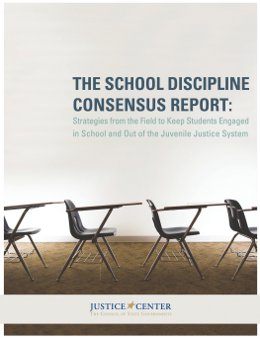
Research and data on school discipline practices are clear: millions of students are being removed from their classrooms each year, mostly in middle and high schools, and overwhelmingly for minor misconduct. When suspended, these students are at a significantly higher risk of falling behind academically, dropping out of school, and coming into contact with the juvenile justice system. A disproportionately large percentage of disciplined students are youth of color, students with disabilities, and youth who identify as lesbian, gay, or bisexual (LGB).
Trailblazing student and parent groups, advocacy organizations, researchers, professional associations, and school districts have raised the visibility of exclusionary discipline practices across the nation. In response, individual schools, districts, and state education systems have implemented research-based approaches to address student misbehavior that hold youth accountable, address victims’ needs, and effectively improve both student conduct and adult responses. These approaches also help keep students engaged in classrooms and out of courtrooms.
The federal government has also put a spotlight on these issues. As part of the Supportive School Discipline Initiative, the U.S. Departments of Education and Justice issued joint guidance in January 2014 to assist public elementary and secondary schools in meeting their obligations under federal law to administer student discipline without discriminating on the basis of race, color, or national origin.
The School Discipline Consensus Report builds on this foundation and breaks new ground by integrating some of the best thinking and innovative strategies from the fields of education, health, law enforcement, and juvenile justice. Leaders in these diverse systems agree that local and state governments must not only help schools reduce the number of students suspended, expelled, and arrested, but must also provide conditions for learning wherein all students feel safe, welcome, and supported. The central thesis of this comprehensive report is that achieving these objectives requires the combination of a positive school climate, tiered levels of behavioral interventions, and a partnership between education, police, and court officials that is dedicated to preventing youth arrests or referrals to the juvenile justice system for minor school-based offenses.
Population of focus: Adolescents
Links to resource:
- Full report — The School Discipline Consensus Report: Strategies from the Field to Keep Students Engaged in School and Out of the Juvenile Justice System (pdf)
- Information on the Supportive School Discipline Initiative
Date: 2014
Organization: This report is a product of the School Discipline Consensus Project, a component of the Supportive School Discipline Initiative of the U.S. Departments of Education and Justice.
